How to Use Gesso for Texture: A Comprehensive Guide
Do you want to learn how to use gesso for texture? It can be a great way to add some extra interest and dimension to your paintings. In this comprehensive guide, we will answer all of your questions about using gesso for texturing. We’ll discuss what gesso is, the different ways you can use it, and some tips for getting the most out of this versatile medium. So whether you’re a beginner or an experienced artist, read on for everything you need to know about using gesso for texture!
What is Gesso?
Gesso is a type of paint primer that can be used to create texture on a variety of surfaces. It is typically made from a combination of acrylic polymer and white pigment, and can be found in both aerosable and non-consumable form.
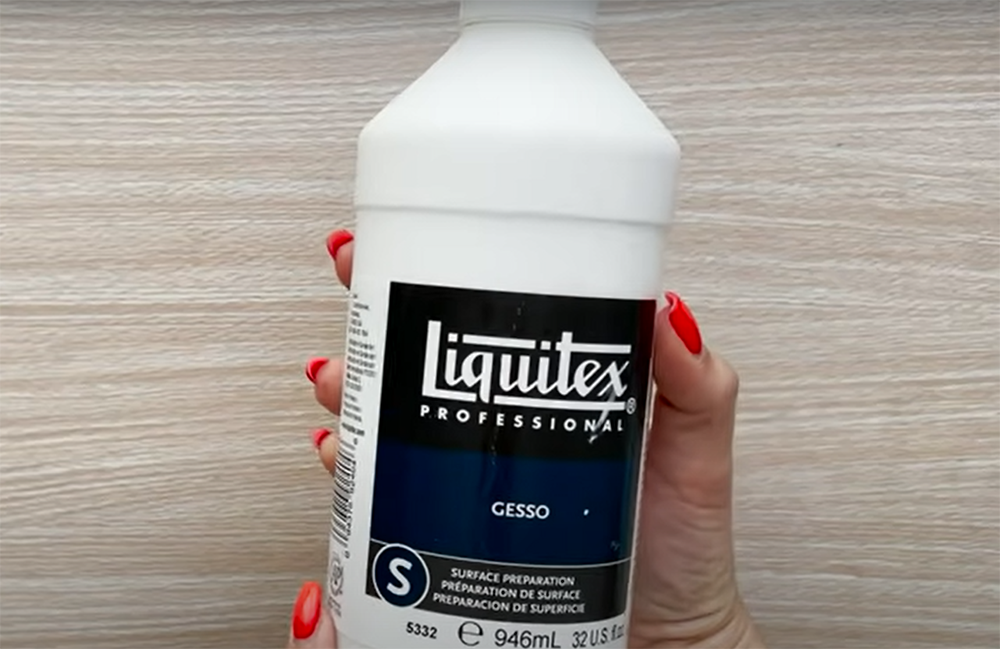
Consumable gesso is most often used by artists as it can be easily applied with a brush or other tool and dries quickly. Non-consumable gesso is more commonly used for industrial applications, as it is harder to apply and takes longer to dry.
Gesso can be used on canvas, wood, metal, glass, and many other surfaces. It is typically applied in a thin layer and allowed to dry before adding additional layers of paint or another medium.
Gesso is a versatile medium that can be used to create a variety of textures. For example, it can be used to create a smooth, matte finish or a rough, textured finish. It can also be used to create raised areas of texture by applying it with a brush or other tool and then using your fingers to press the gesso into the surface.
Once you have created the desired texture with gesso, you can then paint over it with any color of paint you like. You can also add additional layers of gesso to create different effects. [1]
If you are new to using gesso, I would recommend starting with a small project such as a canvas or a piece of wood. Experiment with different techniques and see what you like best.
Different types of gesso and their textures
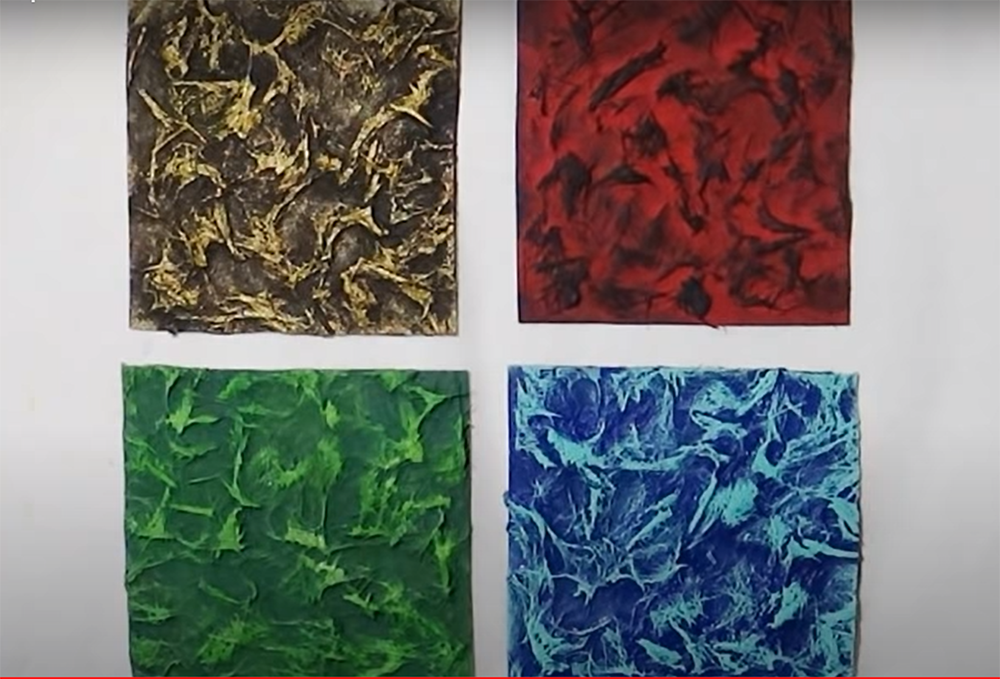
Now that we know the basics of what gesso is, let’s move on to the different types of gesso and how they can create different textures.
There are two main types of gesso: acrylic-based and oil-based. Acrylic-based gessos are usually white or off-white, while oil-based gessos tend to be darker in color.
Acrylic-based gessos are typically used for prepping surfaces for painting, as they have a smooth texture that’s ideal for creating an even surface. They’re also easy to clean up with water, making them a good choice if you’re just starting out with using gesso.
Oil-based gessos are a bit more complicated to work with, as they require mineral spirits or paint thinner for cleanup. However, they tend to be more durable and create a more textured surface. This makes them ideal for creating interesting backgrounds or adding dimension to your painting.
There are also different types of gesso based on their level of coarseness. Fine-grade gesso is smooth and creates a nice even surface, while coarse-grade gesso has larger particles that can create an interesting textured look.
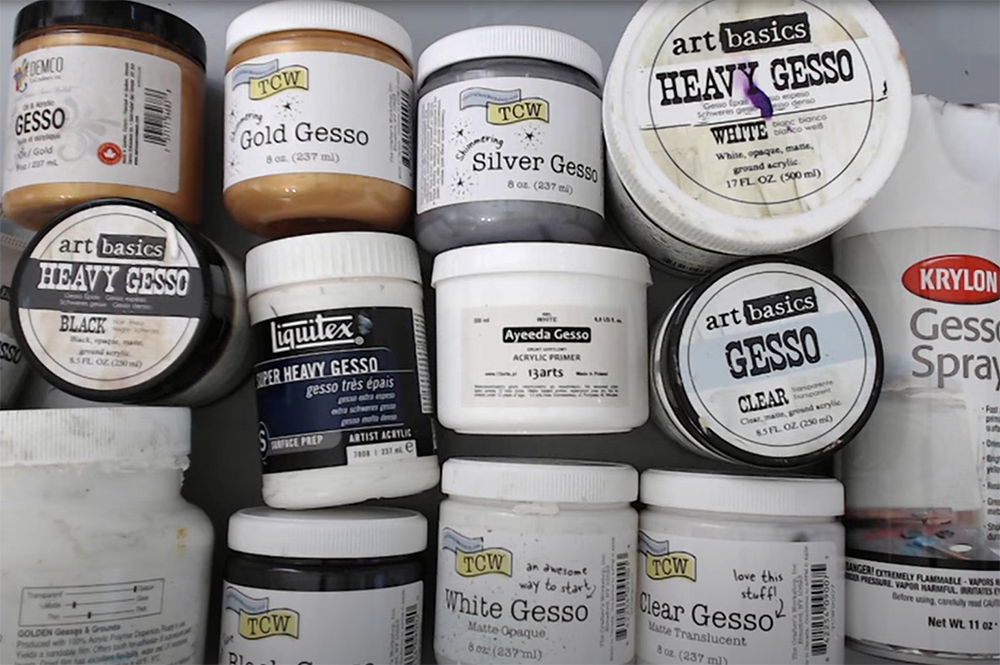
Which type of gesso you choose will depend on the effect you’re trying to achieve with your painting. If you’re unsure, it’s always a good idea to start with a fine-grade gesso and then experiment with different types until you find the one that’s right for you.
Now that we’ve covered the basics, let’s move on to some tips for using gesso to create interesting textures in your paintings.
One way to create texture with gesso is by mixing it with other mediums. For example, you can add sand or gravel to create a gritty texture, or mix it with paint to create a thicker, more textured surface.
You can also use different application techniques to create interesting textures. For example, you can use a brush to apply the gesso in long strokes, or use a sponge or rag for a more mottled effect.
Experiment with different techniques and mediums until you find the ones that work best for you.
Another way to create texture is by using multiple layers of gesso. This can be especially effective if you use a coarse-grade gesso for the first layer and then follow up with a fine-grade gesso.
The number of layers you use will depend on the effect you’re going for. If you want a more subtle texture, two or three layers should be sufficient. For a more pronounced texture, four or five layers may be necessary.
Once you’ve applied the desired number of layers, allow the gesso to dry completely before proceeding with your painting.
If you’re looking for even more texture, consider adding embellishments such as beads, buttons, or sequins to your painting.
Embellishments can add a fun and whimsical touch to your work, and they’re a great way to add interest to an otherwise plain surface.
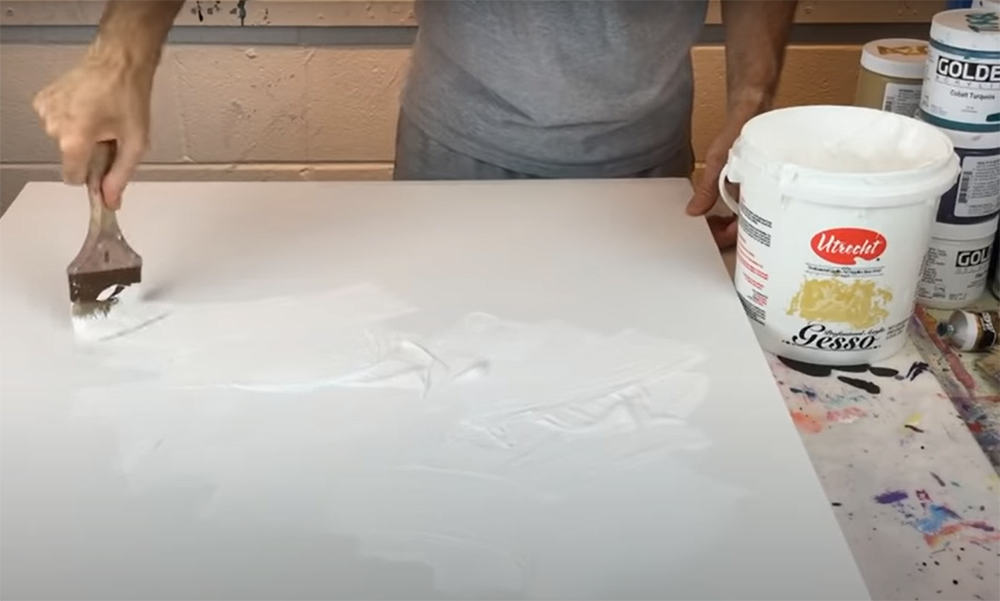
When adding embellishments, it’s important to make sure that the gesso is completely dry first. Otherwise, the embellishments may not adhere properly and could fall off. [2]
Once you’ve added all of the desired embellishments, allow the gesso to dry completely before proceeding with your painting.
How to apply gesso to a canvas?
It’s pretty simple to apply gesso to a canvas. All you need is a brush and some gesso. Start by painting a thin layer of gesso onto the canvas in one direction. Then, go over it again in the opposite direction. You can also add texture to your gesso by using a textured brush or by mixing in sand or other materials. Once you’re happy with the coverage and texture, let it dry completely before adding any paint or other mediums.
How do you Use Gesso for Texture?
Gesso is a versatile medium that can be used to create interesting textures on a variety of surfaces. In this comprehensive guide, we’ll answer some common questions about how to use gesso and provide useful tips for creating beautiful texture effects.
Determine the Desired Texture
The first step in using gesso for texture is to determine the desired texture. Do you want a smooth, matte finish? Or are you looking for something with more visual interest? Gesso can be used to create both types of textures, so it’s important to know what effect you’re going for before you start.
If you’re unsure of what texture you want, we recommend starting with a smooth, matte finish. This type of texture is easy to achieve and can be created on any surface. To get started, simply apply a layer of gesso to your chosen surface and allow it to dry completely. Once dry, your surface will have a beautiful matte finish that’s perfect for painting or drawing on.
If you’re looking for something with more visual interest, there are a few different techniques you can try. One popular method is to add sand to your gesso before applying it to the surface. This will create a rough, sandy texture that’s perfect for adding dimension to your artwork. Another option is to add glitter or other small embellishments to the wet gesso. This will create a sparkly, shimmery texture that’s perfect for creating unique effects.
Mix the Gesso
The next step is to mix the gesso. Gesso comes in both liquid and paste form, so you’ll need to choose the consistency that’s right for your project. If you’re unsure of which to use, we recommend starting with liquid gesso. This type of gesso is easy to work with and can be applied to any surface.
To mix the gesso, simply combine equal parts of water and gesso in a bowl or container. Stir until the mixture is smooth and free of lumps. If you’re using liquid gesso, there’s no need to add anything else to the mixture. However, if you’re using paste gesso, you may want to add a few drops of water to thin it out.
Once the gesso is mixed, it’s time to apply it to your surface.
Now it’s Time to Start Texturing!
Now that you know how to mix the gesso and determine the desired texture, it’s time to start texturing! Apply the gesso to your surface using a brush or other applicator. If you’re using liquid gesso, pour it onto your surface and spread it around with a brush or other applicator. If you’re using paste gesso, you’ll need to apply it with a putty knife or other similar tool. Spread the gesso evenly over the surface, being sure to fill in any cracks or crevices. Once the gesso is applied, allow it to dry completely.
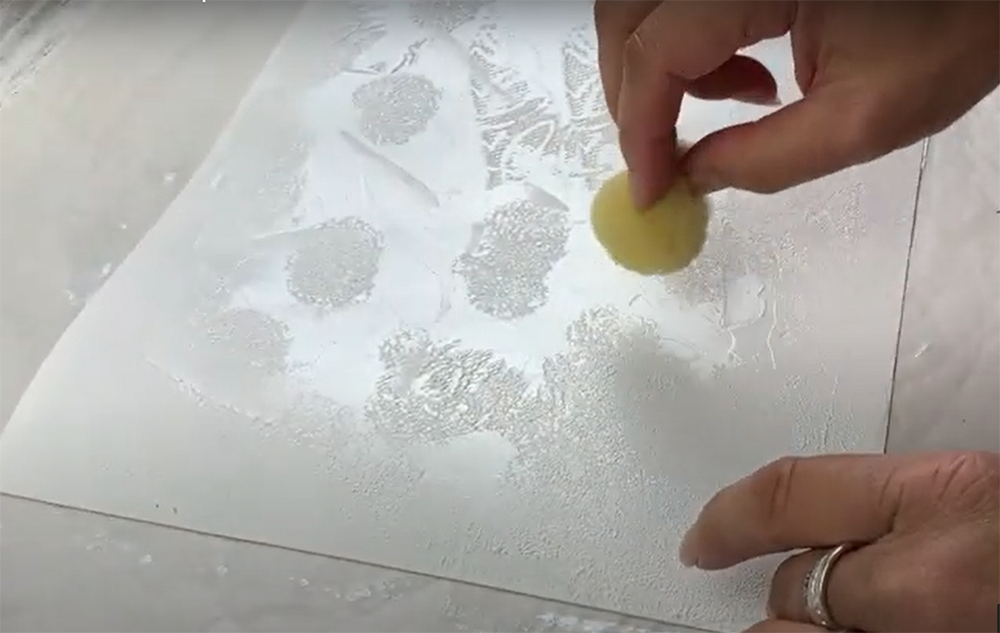
Let it Dry
Once you’ve applied the desired amount of gesso, it’s time to let it dry. Gesso can take anywhere from a few hours to a few days to fully dry, so be patient! If you’re in a hurry, you can speed up the drying process by using a hairdryer or other similar tool. Just be sure not to set the heat too high, as this could damage your surface. [3]
Once the gesso is dry, you can add any additional embellishments (such as sand or glitter) or start painting or drawing on your surface.
FAQ
How do you thicken gesso for texture?
There are a few ways to thicken gesso for texture. One way is to add an agent such as PVA or calcium carbonate powder to the gesso recipe. Another way is to simply apply multiple layers of gesso to the surface you’re working on.
Either of these methods will result in a thicker, more textured surface that’s perfect for painting or other creative applications. [4]
Of course, there are a few things to keep in mind when thickening gesso for texture. First, make sure that the surface you’re working on is clean and free of any debris or dirt. Otherwise, your textures may not adhere properly. Second, be aware that thicker gesso can take longer to dry. So, if you’re working on a time-sensitive project, you may want to consider another method of adding texture.
How do you thin gesso for texture?
The best way to thin gesso for texture is by using a kitchen strainer. Simply pour your gesso into the strainer and hold it over a bowl. Use a spatula or your fingers to push the gesso through the holes in the strainer. The thinner mixture will drip into the bowl while the thicker bits will be left behind in the strainer.
You can also thin gesso by mixing it with water. Start with a 50/50 ratio of gesso to water and mix well. Add more water if you want a thinner consistency. Be aware that adding too much water will make your gesso less effective as a primer.
If you’re unsure how much water to add, start with a small amount and gradually mix in more until you get the desired consistency.
What is the Difference Between Gesso and Texture Paste?
Gesso is a liquid primer that helps to prime surfaces for painting. It can also be used to create texture on surfaces. Texture paste is a thicker medium that is often used to create dimensional effects on surfaces.
Both gesso and texture paste can be thinned with water to create different effects. Gesso is typically thinner than texture paste when it is first mixed with water. [5]
Texture paste will thicken as it dries, so it’s important to work quickly if you’re using it for textural effects. Gesso can also be thinned down and used as a sealant.
What Type of Brush Should I use with Gesso?
The type of brush you use when working with gesso can have a big impact on the final texture of your painting. For a more textured look, try using a natural bristle brush. If you’re going for a smoother finish, then synthetic brushes are best.
Another option is to experiment with different types of paper. Rough surfaces will create more interesting textures than smooth ones. So if you’re looking to add some dimension to your work, consider using watercolor paper or even cardboard.
Finally, don’t be afraid to layer your gesso. This will add depth and variation to the texture of your painting.
Can you use gesso instead of texture paste?
The short answer is yes, you can use gesso instead of texture paste. The long answer is that it depends on the effect you’re going for and the consistency of the gesso. If you want a very textured look, then using gesso will give you a similar effect to using texture paste. However, if you’re looking for a smoother finish, then you may want to thin out the gesso before applying it to your project.
Texture paste is typically used to add dimension and interest to scrapbook pages, mixed media projects, and cards. It can be used as an adhesive or as a medium for painting and other creative techniques. Gesso can also be used in many of these same ways.
How do I add texture to a canvas painting?
One of the easiest ways to add texture to your canvas painting is by using gesso. Gesso comes in a variety of colors and can be mixed with other mediums to create interesting effects. In this comprehensive guide, we will answer some common questions about how to use gesso for texture and provide useful tips for creating beautiful textured paintings.
How do you use gesso white texture?
Gesso can be applied with a brush, trowel, putty knife, or even a roller. It is important to work the gesso into the surface so that it fully adheres. You may want to apply several thin coats rather than one thick coat.
Once you have applied the gesso, you can then add color with paint, ink, or other mediums. You can also leave the surface white for a more minimalist look.
The texture will vary depending on how much gesso you use and how you apply it. Experiment to see what effect you prefer!
Here are some tips for using gesso:
- Use smooth, even strokes when applying gesso.
- Work in small sections so that the gesso doesn’t dry before you have a chance to work with it.
- You can add more coats of gesso to create more texture.
- Gesso can be sanded down if you want a smoother finish.
- Be sure to let the gesso dry totally before adding any other mediums.
How Long does Gesso Take to Dry?
Gesso usually takes around 24 hours to fully dry. However, depending on the thickness of the layer and the temperature and humidity of your environment, it can take longer for thicker layers to dry. You can speed up the drying process by using a hairdryer on a low heat setting, or by placing the painting in a warm room.
Once gesso is dry, it forms an insoluble film that is impermeable to water. This makes it an ideal ground for oil and acrylic paints, as well as making it resistant to mould and mildew.
Oil paint requires that you wait until the gesso has completely dried before beginning to touch up. If you’re using acrylics, you can start painting as soon as the gesso is dry to the touch.
When working with water-based media such as gouache or watercolours, you can start painting immediately after the gesso has dried, as it won’t affect the paint layer.
Is Gesso Toxic?
Gesso is a water-based paint, so it’s non-toxic and safe to use. You can find it at most art supply stores, or online. [6]
How do I Remove Gesso from my Brushes?
The best way to remove gesso from your brushes is to use a mild soap and water. Simply wet your brush, add some soap to the bristles, and then massage it into the brush. Rinse the brush thoroughly under running water until the water runs clear.
Once you’ve removed as much gesso as possible, you can then rinse the brush with white vinegar. This will help to remove any residual gesso and also disinfect the bristles. Finally, rinse the brush one last time with clean water and allow it to air dry.
If you find that you’re still having trouble removing all of the gesso from your brush, you can try using a stronger solvent such as acetone. However, be sure to use this sparingly and only on synthetic brushes as it can damage natural bristles. Always test the solvent on a small area of the brush first to make sure it won’t damage the bristles.
Useful Video: 10 Creative Ways to use Gesso
Conclusion
So there you have it, a comprehensive guide on how to use gesso for texture in your paintings. We hope you’ll be able to put these tips to good use in your own work. Thanks for reading! As always, feel free to leave any questions or comments below. Happy painting!
References:
- https://lindajane.co.nz/how-to-add-texture-using-gesso-gesso-and-gesso-substitutes-explained/
- https://www.art-is-fun.com/what-is-gesso
- https://www.theworkbuzz.com/how-to-use-gesso-for-texture/
- https://artplace.ca/how-to-use-gesso/
- https://mixedupcreativeacademy.com/qa/quick-answer-what-is-the-difference-between-gesso-and-texture-paste.html
- https://blendedcanvas.com/is-gesso-toxic/

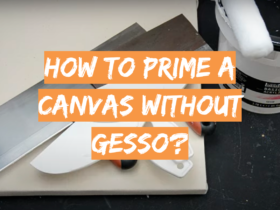



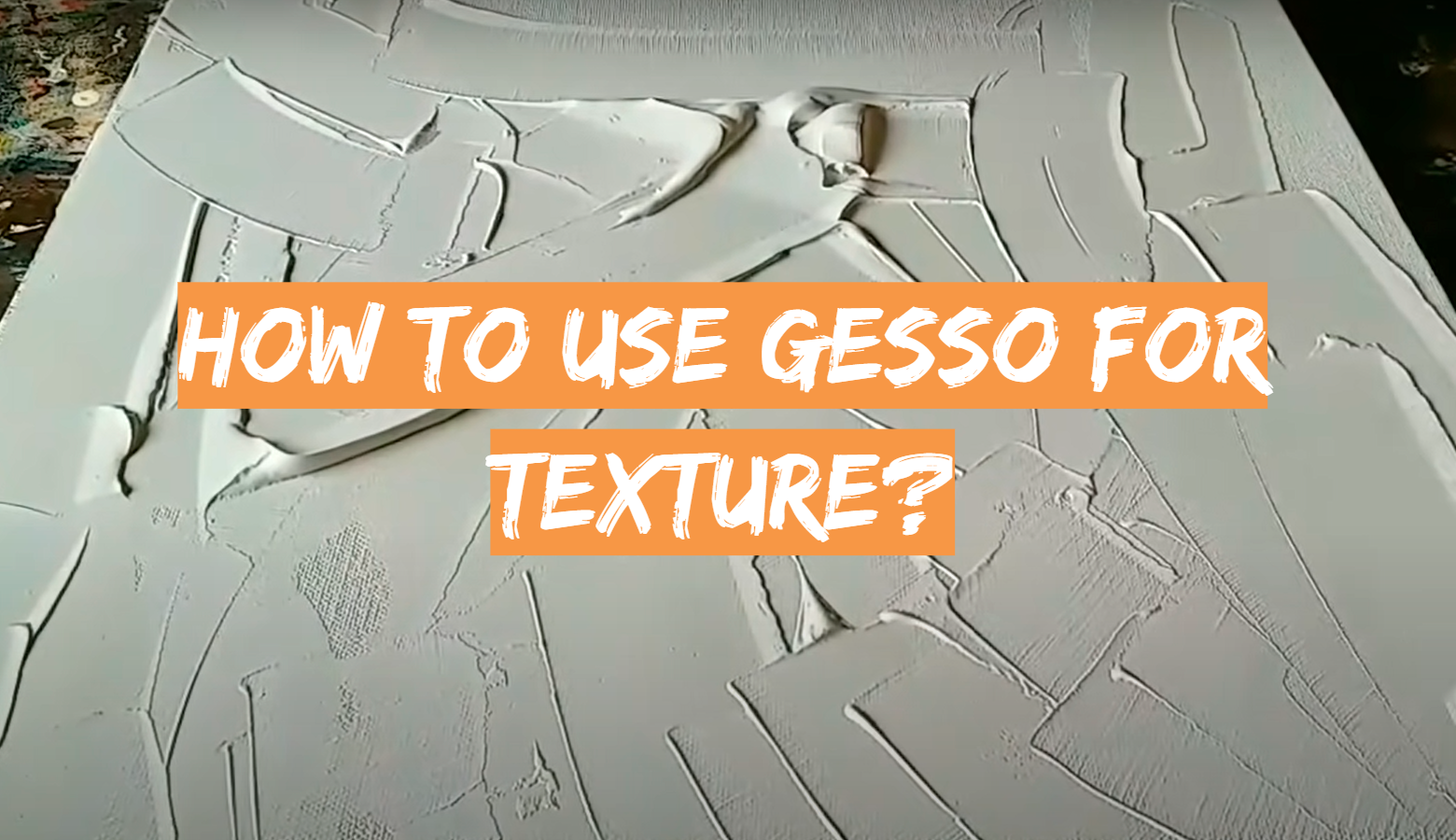
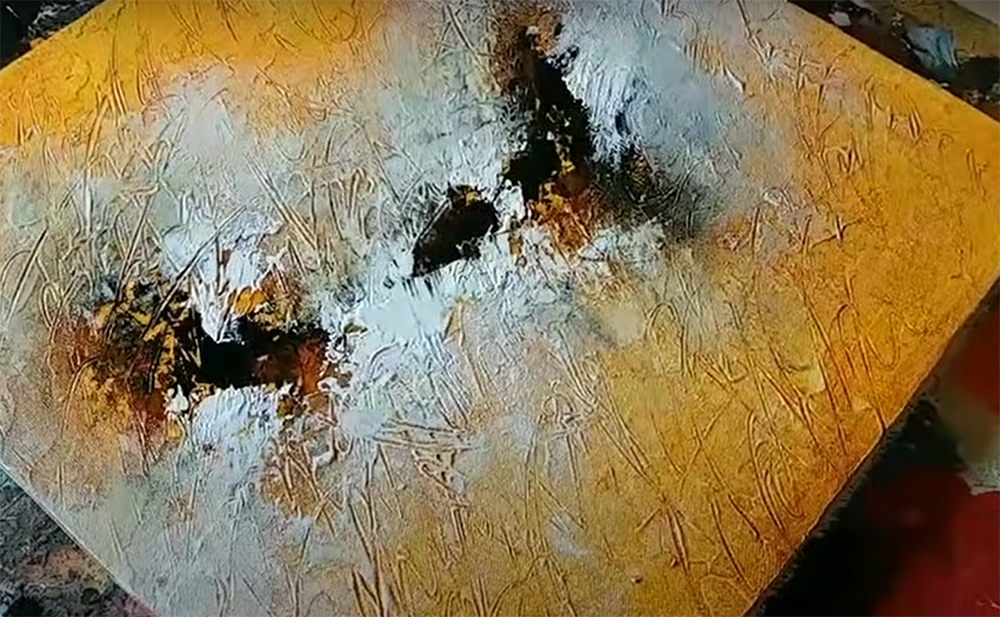


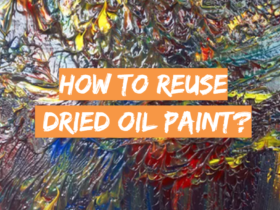
Leave a Review